#Waterloo and City Railway
Note
I would like to show off the cutiest locomotive in the NRM

Look at them also Stafford cameo
A small electric shunter that is a complete friend...I may ask a friend to make an 009 version or the Kato 11-109 cause that is precious. I've never seen her before, and that is a shame.
#Hazel Asks#Ask Hazel#Hazel Q&A#fren#smol fren#electric shunter#Southern Railway#Southern Railway Service Loco 75s#Waterloo and City Railway
10 notes
·
View notes
Text
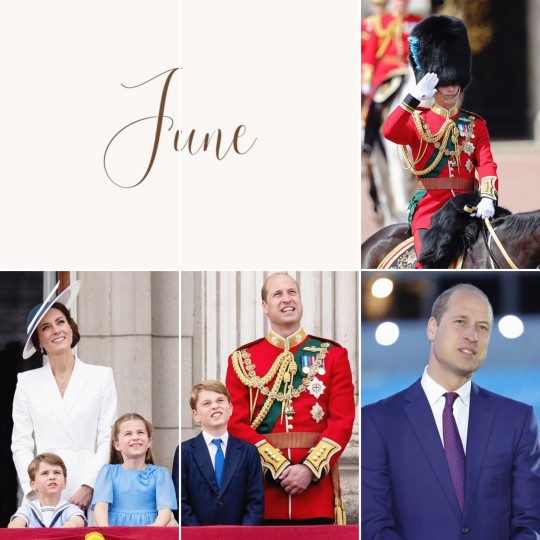




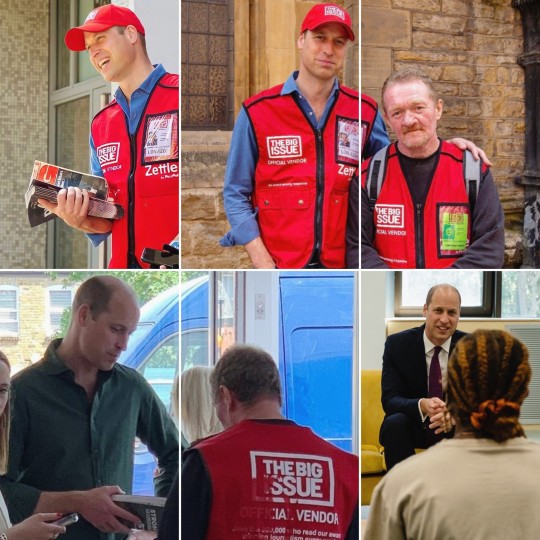
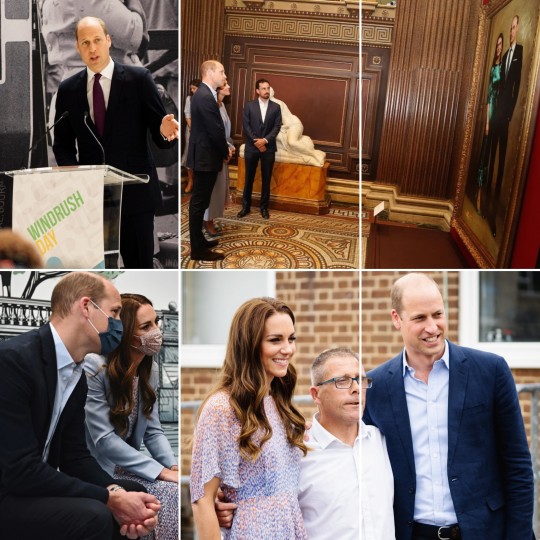
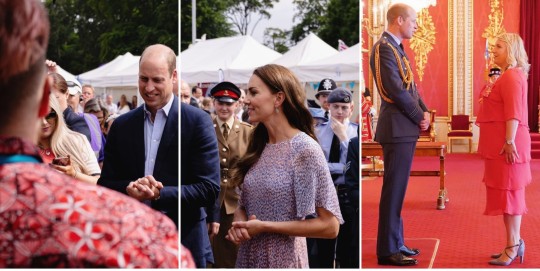
─ •✧ WILLIAM'S YEAR IN REVIEW : JUNE ✧• ─

1 JUNE - William attended the Senior Colonels' Conference and Dinner at Clarence House.
2 JUNE - William took part in The Queen's Birthday Parade on Horse Guards Parade along with other members of the Royal Family at which The Queen's Colour of the 1st Battalion Irish Guards was trooped. On the conclusion of the Parade, they rode back to Buckingham Palace where he appeared on the Balcony along with Catherine and their children to witness a fly-past marking the Queen’s official Birthday. In the evening, William was present at the lighting of the National Beacon at Buckingham Palace to commemorate the Platinum Jubilee.
3 JUNE - William and Catherine attended the National Service of Thanksgiving for Her Majesty's Platinum Jubilee in St. Paul's Cathedral. After the Service, they a attended Reception at Guildhall given by the Rt. Hon. the Lord Mayor and the City of London Corporation.
4 JUNE - William and Catherine along with George and Charlotte visited Cardiff Castle where were received by Her Majesty's Lord-Lieutenant of South Glamorgan (Mrs. Morfudd Meredith). Later they attended the Platinum Jubilee Concert at Buckingham Palace.
5 JUNE - William and Catherine attended the Platinum Jubilee Street Party at Kensington before attending the Platinum Jubilee Pageant in the Mall. They later appeared on the Buckingham Palace Balcony along with their three children.
7 JUNE - William held an Investiture at Buckingham Palace on The Queen's behalf.
8 JUNE - William was spotted selling the Big Issue Magazine in London.
13 JUNE - William and Catherine attended the Order of The Garter Service at St. George's Chapel in Windsor.
14 JUNE - William attended a Duchy of Cornwall Meeting at 10 Buckingham Gate. Afterwards, he attended the Grenfell Tower Five Year Memorial Service along with Catherine.
15 JUNE - William visited the Lionesses team at St. George's Park ahead of the European Championship where he was received by Mr. James Leavesley (Vice Lord-Lieutenant of Staffordshire).
16 JUNE - He held a United for Wildlife Meeting at Kensington Palace.
17 JUNE - William and Catherine attended Day Four of Royal Ascot.
19 JUNE - Kensington Palace released a new photograph for Father's Day featuring William with his three children.
21 JUNE - A special issue of the Big Isuue magazine was released to mark William's 40th Birthday. He also visited Dave Martin, the Big Issue seller with whom he sold the magazines in London earlier in the month. William and Catherine held a Meeting with the Lord Hague of Richmond, Mr. Simon Patterson and Ms. Amanda Berry (Chairman, Vice-Chairman & Chief Executive, The Royal Foundation) via video link.
22 JUNE - William and Catherine visited Brixton House Theatre where they were received by Mr. Christopher Wellbelove (Deputy Lieutenant of Greater London). Afterwards, Her Majesty's Lord-Lieutenant of Greater London (Sir Kenneth Olisa) recieved them as they attended the unveiling of the National Windrush Monument at Waterloo Railway Station.
23 JUNE - William and Catherine spent their day carrying out engagements in Cambridgeshire. First, they were received by Her Majesty's Lord-Lieutenant of Cambridgeshire (Mrs. Julie Spence) as they visited Fitzwilliam Museum where their first joint portrait was unveiled. Afterwards, they visited East Anglia Children's Hospice - Milton where they were received by Mr. Benjamyn Damazer (Vice Lord-Lieutenant of Cambridgeshire). Subsequently they were received by Mrs. Caroline Bewes (Deputy Lieutenant of Cambridgeshire) at Jimmy's Cambridge. Later Williama and Catherine spent their time at the first-ever Cambridgeshire County Day at Newmarket July Course.
24 JUNE - William held an Investiture at Buckingham Palace.
#year in review : william#year in review : 2022#review 2022#william review : june#british royal family#british royals#british royalty#royalty#royals#prince william#prince of wales#the prince of wales#duke of cambridge#princess of wales#the princess of wales#princess catherine#kate middleton#duchess of cambridge#prince george of wales#prince george#princess charlotte of wales#princess charlotte#prince louis of wales#prince louis#queen elizabeth ii#queen elizabeth#king charles iii#queen camilla#king charles#brf
93 notes
·
View notes
Text

Having recently read a fanfic in which Sherlock and John catch trains to various parts of southern England exclusively from London’s Waterloo station, even when this is not the usual/logical route, I’d like to share this for writers who might not be familiar with the whole business of trains in/to/from London.

Let’s start with the history of how and when rail services came to London. This article explains how and why we have so many terminal stations (short version: because when they were built, the railway companies were privately owned and all needed their own terminus in London).
The main terminal stations are Waterloo (south), Paddington (west), Euston (north-west), King’s Cross (north-east), St Pancras (East Midlands and Eurostar), Liverpool Street (east), Fenchurch Street (south-east) and Victoria (south). There are others (see the article linked above and my husband’s comment below).
As we know, within London and the suburbs, these termini are linked by the London Underground (aka The Tube) network. There is also the Docklands Light Railway (DLR) - a driverless system - and other overground rail services. Here is a map of it all from Transport of London (TfL). Baker Street is served by five tube lines: Bakerloo (brown), Metropolitan (maroon), Jubilee (silver), Circle (yellow), and Hammersmith & City (pink). It’s also only a five-minute walk from Marylebone (the nearest terminal) which itself is just behind the Landmark hotel, which we know as the exterior for The Restaurant Scene.
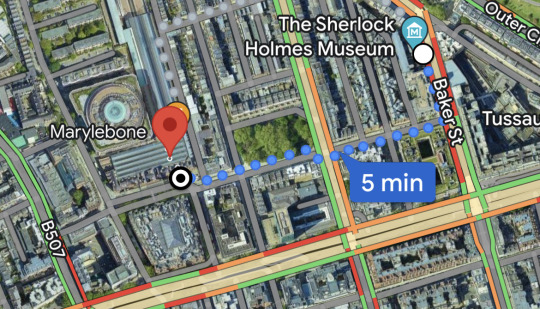
Aside: I think Sherlock is unlikely to catch a bus unless directly related to a case - they’re just too slow for him. But you can find bus maps and all kinds of other TfL mappy delights here.
If you have characters using public transport in the UK, your best bets for accurate research are:
Google Maps (in public transport mode)
National Rail (see the page footer for all the useful stuff)
Transport for London
All these also have apps available.
I’m happy to do Sherlockian Britpicking (my day job is copy-editing) if that’s helpful for you. (Email to [my username]@gmail.com is the best way to reach me.)
If you want to go the full Howard Shilcott, I still very much enjoy reading the rail enthusiasts’ forums posts about the myriad tube-related continuity errors in TEH. I’ll let you Google those for yourself. 😉
———
Ran this past my husband (who is totally the full Howard Shilcott) and he made a few corrections (and a lot of faces!) before I posted: he wishes it to be known that he ‘remains unhappy about [my summary of] Fenchurch Street’ and thinks I should add Charing Cross to the list so people know how to get to Kent. So that’s all clear then. 😂
#London#London travel#London transport#London Underground#London stations#trains#help for fanfic writers#fanfic#trains in England#railways#Railway Britpicking#Britpicking#Britpicker#Why yes I am autistic thank you#Howard Shilcott#info post#infodump#sherlock#British Rail#British trains#English trains#fanfic writing#fanfic Britpick#important details#Sherlock fanfic#Sherlock fanfiction#Sherlock locations
32 notes
·
View notes
Text
The Crooked Man
This one is from Memoirs - we have two more from that collection left to go after this.
Oddly enough I was actually reading this story at around the same time that Watson is reading!
Aldershot was - and still is - a major "garrison town" located 31 miles SW of Charing Cross. Around 20% of the British Army were based there in 1914.
Holmes says "Elementary!"
Aldershot is accessible by direct train from Waterloo - today electric trains serve it from there in just over an hour.
The Crimea of course refers to the Crimean War of 1853-56; the one of the Light Brigade, Florence Nightingale and Mary Seacole. It was the first major war to make use of railways, telegraphy and photography.
The Mutiny refers to the common British name for the uprising in India in 1857-58 against the East India Company. Klinger devotes an entire chapter to it. The trigger, although resentments had been around for a while, was rumours that the grease in cartridges for the Lee Enfield rifle requiring the paper to opened using the mouth contained beef tallow and pork lard, offensive to Hindus and Muslims respectively.
When a group of mostly Muslim soldiers refused to accept the cartridges, were court-martialled and were sentenced to hard labour in the city of Meerut, an uprising broke out and spread across much of India. Support for it was by no means universal.
It took over a year for the British to defeat the insurgents in a war that saw many atrocities, the local population suffering the worst. Exaggerated reports of Indian war crimes in the British press fuelled a complete lack of sympathy in British soldiers and public alike.
The conflict ended with the capture or death of the rebel leaders, an amnesty for those who had not murdered Europeans and the end of the East India Company's rule with the Crown taking over, followed by some reforms to involve Indians more in administration.
Roman Catholicism had become tolerated by this point with nearly all legal restrictions removed, although discrimination remained, especially in Ireland.
Brain fever turns up again!
A florin was a two shilling coin.
This is the only short story appearance of a Baker Street Irregular.
Cantonments were military garrisons.
Colour Sergeant is an NCO rank in the infantry regiments of the British Army - while not in actual use at the time, it was commonly used to refer to the quartermaster sergeant i.e. the sergeant in charge of the company supplies. It is the equivalent to Staff Sergeant in other units.
The story of Uriah and Bathsheba can be found in 2 Samuel Chapters 11 and 12. It's a common one for artist because it contains naked lady.
25 notes
·
View notes
Text
This will probably be short, as much of what I like in this chapter (Cosette, Hugo’s feelings about the redesign of Paris) has also been in the previous ones. I can’t ignore this line, though:
“The market-gardens, the timber-yards, and the old buildings have been effaced. To-day, there are brand-new, wide streets, arenas, circuses, hippodromes, railway stations, and a prison, Mazas, there; progress, as the reader sees, with its antidote.”
Hugo’s often in favor of “progress” in the 19th-century sense, so it’s pretty fascinating to see him be more skeptical and sarcastic here? All of the comforts he lists are impressive, but they serve the bourgeois who moved into the neighborhood after its reorganization, not the poor. The cost of this “progress” is the prison, which alludes to the darkness covered up by this image of reform. I think this skepticism may come from this being a more “technological” sort of progress than a social one (although not every 19th-century person would see those as distinct); as a fan of old architecture (see: all his building digressions here, most of The Hunchback of Notre Dame), Hugo understandably was distressed by the changes to Paris and by what was defined as “better” architecturally and structurally for the city. Tracing the impacts of this on the poorer neighborhoods his characters inhabited is one way to shift the focus from the technological veneer of progress to the lingering social ills in Paris.
Hugo’s thoughts on history here are interesting as well. Like with Waterloo, the people are its arbiter (”The memory of the populace hovers over these relics of the past”). Le Petit-Picpus and related areas are preserved (by name) in their memories even after their physical structures are gone, deciding what’s important in the same way they decided Napoleon’s fate (this also may be relevant to Hugo’s longing for home, as he decides which parts of Paris to preserve from his memory in this book). He provides documentary evidence (the map) to confirm all of this and traces the history of Petit-Picpus’ destruction, but ultimately, the people’s voices are more important than these papers; their continued use of these names is why they’re remembered at all.
21 notes
·
View notes
Text
Combining two of my own interests in a way that no one asked for and will be interesting to maybe three other people lets go: Which London Underground lines the ghosts would have been able to use! This may be a long read.
Going with ghosts from Fanny onwards, as they are the only ones that would have been able to.
Fanny - born 1855, died ambiguously past some point in 1912
Bakerloo - opened 1906, would have been able to use it!
Central - opened as the Central London Railway in 1900, so yup! She also would have been around for two of its expansions, one in 1908 and another in 1912.
Circle - not technically its own line in her lifetime, but the tracks the now circle line is on were owned by two railway companies - the Metropolitan Railway and District Railway.
District - opened 1868, had several expansions within her lifetime from then.
Hammersmith & City - opened 1864. She also would have been around for it becoming electricity operated in 1906!
Jubilee - no, opened as the Jubilee line in 1979.
Metropolitan - opened 1863, made electric in 1905 (not north of Rickmansworth until 1961)
Piccadilly - opened 1906
Waterloo & City - opened 1898, although at this point it technically was not its own underground line.
Captain - assuming he was born sometime in the 1890s-1900s and died in/just past 1945
Bakerloo - yep! Would also be alive for its claim of the initially Metropolitan Stanmore branch!
Central - depending on exactly when he died he could've seen some of this lines expansion post-ww2, but other than that, it was around in his lifetime!
Circle - would have been around for the Circle line becoming more similar to how it is today, although it still didn't technically become its own line until 1949 (assuming he's dead at that point).
District - yeah it was there. Same as Fanny really.
H&C - Would have seen its expansion in 1936, which replaced the old District line up to Barking.
Jubilee - same as Fanny
Metropolitan - also largely the same as Fanny
Northern - opened in 1937 from a combination of two railways. Expanded a bit between 1939 and 1941. There were further plans for extension but these were put on halt due to the war and eventually scrapped in 1954.
Piccadilly - would have been alive for its expansion in the 1930s.
W&C - around for the replacement of the original wooden trains on the line in 1940.
Pat - born 1945, died 1984
Bakerloo - around for the closing of the Stanmore branch on the Bakerloo line in 1979 following the opening of the Jubilee line.
Central - yeah it was there for him. No major changes.
Circle - Became its own line in 1949 when he would've been 4 ig lol.
District - no major changes
H&C - still nothing really new
Jubilee - alive for its opening!
Metropolitan - alive for the switch to electric trains between Amersham and Chesham in 1961
Northern - no major changes
Piccadilly - would have been alive for the expansion to Heathrow Airport terminals! Former terminal 1 and terminals 2 and 3 were added between 1975-77
Victoria - woo vicky line is here! Construction began in 1962 and it opened gradually between 1968-71.
W&C - no major changes
Julian - born ??? like the 1950s/60s maybe?, died 1991 or 93 I literally can't remember rn my bad
also going to omit lines where nothing drastic happens now soz
Central - just missed out on being able to witness the closure of the Epping to Ongar service in 1994.
H&C - became its own real line in 1988!
Jubilee - If he died in '93 not '91, he may have been able to witness the very beginning of the extension of the Jubilee line
Piccadilly - also would have seen the expansions to Heathrow, but with terminal 4 as well, which was added in 1986.
Victoria - same as Pat
W&C - just missed out on being able to witness the Waterloo and City line actually become its own line in 1994.
#uhh yeah#i could not sleep at all and this is what came as a result#bbc ghosts#tbh this was not even that thorough research so apologies if some of this is false... if it is please blame the tfl website#i also think ive got a cold???#so mb if this isnt coherent
8 notes
·
View notes
Text
The Duke of Cambridge’s Court Circular entries for June 2022

Total: 23 engagements
Solo:
Public: 2
Private: 5
Joint:
Public: 14
Private: 2
Breakdown:
June 1: Attended the Senior Colonels’ Conference and Dinner at Clarence House
June 2: (2)
Attended the Trooping The Colour Ceremony, The Queen’s Birthday Parade, on Horse Guards Parade
Attended the lighting National Beacon at Buckingham Palace to commemorate the Platinum Jubilee
June 3: (2)
Attended a National Service of Thanksgiving for Her Majesty’s Platinum Jubilee in St Paul’s Cathedral
Attended a Reception given by the Rt Hon the Lord Mayor and the City of London Corporation at Guildhall, London EC2
June 4: (2)
Visited Cardiff Castle and were received by Her Majesty’s Lord-Lieutenant of South Glamorgan (Mrs Morfudd Meredith)
Attended the BBC Concert at Buckingham Palace to celebrate The Queen’s Platinum Jubilee
June 5: Attended the Platinum Jubilee Pageant in the Mall, London SW1
June 7: Held an Investiture at Buckingham Palace
June 13: (2)
Attended the Most Noble Order of the Garter Service at Windsor Castle
Attended a Luncheon Party for the Companions of the Most Noble Order of the Garter
June 14: (2)
Attended a Duchy of Cornwall Meeting at 10 Buckingham Gate, London SW1
Attended the Grenfell Tower Five Year Memorial Service at the base of the Tower, Grenfell Road, London W11
June 15: Visited the Lionesses team at St George’s Park, Newborough Road, Needwood, Burton upon Trent, and was received by Mr James Leavesley (Vice Lord-Lieutenant of Staffordshire)
June 16: Held a United For Wildlife Meeting at Kensington Palace
June 21: Held a Royal Foundation Meeting via video link with the Lord Hague of Richmond (Chairman), Mr Simon Patterson (Vice-Chairman) and Ms Amanda Berry (Chief Executive)
June 22: (2)
Visited Brixton House Theatre, 385 Coldharbour Lane, London SW9, and were received by Mr Christopher Wellbelove (Deputy Lieutenant of Greater London)
Attended the unveiling of the National Windrush Monument at Waterloo Railway Station, London SE1, and were received by Her Majesty’s Lord-Lieutenant of Greater London (Sir Kenneth Olisa)
June 23: (4)
Visited the Fitzwilliam Museum, Trumpington Street, Cambridge, and were received by Her Majesty’s Lord-Lieutenant of Cambridgeshire (Mrs Julie Spence)
Visited East Anglia Children’s Hospice, 42 High Street, Milton, and were received by Mr Benjamyn Damazer (Vice Lord-Lieutenant of Cambridgeshire)
Visited Jimmy’s Cambridge, 1 East Road, Petersfield, and were received by Mrs Caroline Bewes (Deputy Lieutenant of Cambridgeshire)
Attended Cambridgeshire County Day at Newmarket July Course, Newmarket
June 24: Held an Investiture at Buckingham Palace
——————————————————————————
Current total for 2022: 121 engagements
15 notes
·
View notes
Text
Events 5.5 (before 1940)
553 – The Second Council of Constantinople begins.
1215 – Rebel barons renounce their allegiance to King John of England — part of a chain of events leading to the signing of the Magna Carta.
1260 – Kublai Khan becomes ruler of the Mongol Empire.
1494 – On his second voyage to the New World, Christopher Columbus sights Jamaica, landing at Discovery Bay and declares Jamaica the property of the Spanish crown.
1609 – Daimyō (Lord) Shimazu Tadatsune of the Satsuma Domain in southern Kyūshū, Japan, completes his successful invasion of the Ryūkyū Kingdom in Okinawa.
1640 – King Charles I of England dissolves the Short Parliament.
1654 – Cromwell's Act of Grace, aimed at reconciliation with the Scots, proclaimed in Edinburgh.
1762 – Russia and Prussia sign the Treaty of St. Petersburg.
1789 – In France, the Estates-General convenes for the first time since 1614.
1809 – Mary Kies becomes the first woman awarded a U.S. patent, for a technique of weaving straw with silk and thread.
1821 – Emperor Napoleon dies in exile on the island of Saint Helena in the South Atlantic Ocean.
1821 – The first edition of The Manchester Guardian, now The Guardian, is published.
1835 – The first railway in continental Europe opens between Brussels and Mechelen.
1862 – Cinco de Mayo: Troops led by Ignacio Zaragoza halt a French invasion in the Battle of Puebla in Mexico.
1864 – American Civil War: The Battle of the Wilderness begins in Spotsylvania County.
1865 – American Civil War: The Confederate government was declared dissolved at Washington, Georgia.
1866 – Memorial Day first celebrated in United States at Waterloo, New York.
1877 – American Indian Wars: Sitting Bull leads his band of Lakota into Canada to avoid harassment by the United States Army under Colonel Nelson Miles.
1886 – Workers marching for the Eight-hour day in Milwaukee, Wisconsin were shot at by Wisconsin National Guardsmen in what became known as the Bay View Massacre.
1887 – The Peruvian Academy of Language is founded.
1891 – The Music Hall in New York City (later known as Carnegie Hall) has its grand opening and first public performance, with Tchaikovsky as the guest conductor.
1904 – Pitching against the Philadelphia Athletics at the Huntington Avenue Grounds, Cy Young of the Boston Americans throws the first perfect game in the modern era of baseball.
1905 – The trial in the Stratton Brothers case begins in London, England; it marks the first time that fingerprint evidence is used to gain a conviction for murder.
1912 – The first issue of the Bolshevik newspaper Pravda was published.
1920 – Authorities arrest Nicola Sacco and Bartolomeo Vanzetti for alleged robbery and murder.
1930 – The 1930 Bago earthquake, the former of two major earthquakes in southern Burma kills as many as 7,000 in Yangon and Bago.
1936 – Italian troops occupy Addis Ababa, Ethiopia.
0 notes
Text
Weekly Quiz - 26/1/24 - Answers
Question One
What is the busiest railway station in London?
Answer: Waterloo
Question Two
Event One
‘Ben Hur’ won the Best Picture Oscar
Event Two
John F. Kennedy is elected U.S. President
Event Three
The Olympic Games took place in Rome
In what year did these three events occur?
Answer: 1960
Question Three
Dart player Phil Taylor is from which English city?
Answer:…

View On WordPress
0 notes
Text
Cyril Hare: Sister Bessie
Cyril Hare
Sister Bessie
Sister Bessie or Your Old Leech
“At Christmas-time we gladly greet
Each old familiar face.
At Christmas time we hope to meet
At th’ old familiar place.
Five hundred loving greetings, dear,
From you to me
To welcome in the glad New Year
I look to see!”
Hilda Trent turned the Christmas card over with her carefully manicured fingers as she read the idiotic lines aloud.
“Did you ever hear anything so completely palsied?” she asked her husband. “I wonder who on earth they can get to write the stuff. Timothy, do you know anybody called Leech?”
“Leech?”
“Yes—that’s what it says: ‘From your old Leech.’ Must be a friend of yours. The only Leach I ever knew spelt her name with an a and this one has two e’s.” She looked at the envelope. “Yes, it was addressed to you. Who is the old Leech?” She flicked the card across the breakfast-table.
Timothy stared hard at the rhyme and the scrawled message beneath it.
“I haven’t the least idea,” he said slowly.
As he spoke he was taking in, with a sense of cold misery, the fact that the printed message on the card had been neatly altered by hand. The word “Five” was in ink. The original, poet no doubt, had been content with “A hundred loving greetings”.
“Put it on the mantelpiece with the others,” said his wife. “There’s a nice paunchy robin on the outside.”
“Damn it, no!” In a sudden access of rage he tore the card in two and flung the pieces into the fire.
It was silly of him, he reflected as he travelled up to the City half an hour later, to break out in that way in front of Hilda; but she would put it down to the nervous strain about which she was always pestering him to take medical advice. Not for all the gold in the Bank of England could he have stood the sight of that damnable jingle on his dining-room mantelpiece. The insolence of it! The cool, calculated devilry! All the way to London the train wheels beat out the maddening rhythm:
“At Christmas-time we gladly greet...”
And he had thought that the last payment had seen the end of it. He had returned from James’s funeral triumphant in the certain belief that he had attended the burial of the blood-sucker who called himself “Leech”. But he was wrong, it seemed.
“Five hundred loving greetings, dear...”
Five hundred! Last year it had been three, and that had been bad enough. It had meant selling out some holdings at an awkward moment. And now five hundred, with the market in its present state! How in the name of all that was horrible was he going to raise the money?
He would raise it, of course. He would have to. The sickening, familiar routine would be gone through again. The cash in Treasury notes would be packed in an unobtrusive parcel and left in the cloakroom at Waterloo. Next day he would park his car as usual in the railway yard at his local station. Beneath the windscreen wiper—“the old familiar place”—would be tucked the cloakroom ticket. When he came down again from work in the evening the ticket would be gone. And that would be that—till next time. It was the way that Leech preferred it and he had no option but to comply.
The one certain thing that Trent knew about the identity of his blackmailer was that he—or could it be she?—was a member of his family. His family! Thank heaven, they were no true kindred of his. So far as he knew he had no blood relation alive. But “his” family they had been, ever since, when he was a tiny, ailing boy, his father had married the gentle, ineffective Mary Grigson, with her long trail of soft, useless children. And when the influenza epidemic of 1919 carried off John Trent he had been left to be brought up as one of that clinging, grasping clan. He had got on in the world, made money, married money, but he had never got away from the “Grigsons”. Save for his stepmother, to whom he grudgingly acknowledged that he owed his start in life, how he loathed them all! But “his” family they remained, expecting to be treated with brotherly affection, demanding his presence at family reunions, especially at Christmas-time.
“At Christmas-time we hope to meet...”
He put down his paper unread and stared forlornly out of the carriage window. It was at Christmas-time, four years before, that the whole thing started—at his stepmother’s Christmas Eve party, just such a boring family function as the one he would have to attend in a few days’ time. There had been some silly games to amuse the children—Blind Man’s Buff and Musical Chairs—and in the course of them his wallet must have slipped from his pocket. He discovered the loss next morning, went round to the house and retrieved it. But when it came into his hands again there was one item missing from its contents. Just one. A letter, quite short and explicit, signed in a name that had about then become fairly notorious in connection with an unsavoury enquiry into certain large-scale dealings in government securities. How he could have been fool enough to keep it a moment longer than was necessary! . . . but it was no good going back on that.
And then the messages from Leech had begun. Leech had the letter. Leech considered it his duty to send it to the principal of Trent’s firm, who was also Trent’s father-in-law. But, meanwhile, Leech was a trifle short of money, and for a small consideration . . . So it had begun, and so, year in and year out, it had gone on.
He had been so sure that it was James! That seedy, unsuccessful stock-jobber, with his gambling debts and his inordinate thirst for whisky, had seemed the very stuff of which blackmailers are made. But he had got rid of James last February, and here was Leech again, hungrier than ever. Trent shifted uneasily in his seat. “Got rid of him” was hardly the right way to put it. One must be fair to oneself. He had merely assisted James to get rid of his worthless self. He had done no more than ask James to dinner at his club, fill him up with whisky and leave him to drive home on a foggy night with the roads treacherous with frost. There had been an unfortunate incident on the Kingston bypass, and that was the end of James—and, incidentally, of two perfect strangers who had happened to be on the road at the same time. Forget it! The point was that the dinner—and the whisky—had been a dead loss. He would not make the same mistake again. This Christmas Eve he intended to make sure who his persecutor was. Once he knew, there would be no half measures.
---
Revelation came to him midway through Mrs. John Trent’s party—at the very moment, in fact, when the presents were being distributed from the Christmas tree, when the room was bathed in the soft radiance of coloured candles and noisy with the “Oohs!” and “Ahs!” of excited children and with the rustle of hastily unfolded paper parcels. It was so simple, and so unexpected, that he could have laughed aloud. Appropriately enough, it was his own contribution to the party that was responsible. For some time past it had been his unwritten duty, as the prosperous member of the family, to present his stepmother with some delicacy to help out the straitened resources of her house in providing a feast worthy of the occasion. This year, his gift had taken the form of half a dozen bottles of champagne—part of a consignment which he suspected of being corked. That champagne, acting on a head unused to anything stronger than lemonade, was enough to loosen Bessie’s tongue for one fatal instant.
Bessie! Of all people, faded, spinsterish Bessie! Bessie, with her woolwork and her charities—Bessie with her large, stupid, appealing eyes and her air of frustration, that put you in mind of a bud frosted just before it could come into flower! And yet, when you came to think of it, it was natural enough. Probably, of all the Grigson tribe, he disliked her the most. He felt for her all the loathing one must naturally feel for a person one has treated badly; and he had been simple enough to believe that she did not resent it.
She was just his own age, and from the moment that he had been introduced into the family had constituted herself his protector against the unkindness of his elder step-brother. She had been, in her revoltingly sentimental phrase, his “own special sister”. As they grew up, the roles were reversed, and she became his protégée, the admiring spectator of his early struggles. Then it had become pretty clear that she and everybody else expected him to marry her. He had considered the idea quite seriously for some time. She was pretty enough in those days, and, as the phrase went, worshipped the ground he trod on. But he had had the good sense to see in time that he must look elsewhere if he wanted to make his way in the world. His engagement to Hilda had been a blow to Bessie. Her old-maidish look and her absorption in good works dated from then. But she had been sweetly forgiving—to all appearances. Now, as he stood there under the mistletoe, with a ridiculous paper cap on his head, he marvelled how he could have been so easily deceived. As though, after all, anyone could have written that Christmas card but a woman!
Bessie was smiling at him still—smiling with the confidential air of the mildly tipsy, her upturned shiny nose glowing pink in the candle-light. She had assumed a slightly puzzled expression, as though trying to recollect what she had said. Timothy smiled back and raised his glass to her. He was stone-cold sober, and he could remind her of her words when the occasion arose.
“My present for you, Timothy, is in the post. You’ll get it tomorrow, I expect. I thought you’d like a change from those horrid Christmas cards!”
And the words had been accompanied with an unmistakable wink.
“Uncle Timothy!” One of James’s bouncing girls jumped up at him and gave him a smacking kiss. He put her down with a grin and-tickled her ribs as he did so. He suddenly felt light-hearted and on good terms with all the world—one woman excepted. He moved away from the mistletoe and strolled round the room, exchanging pleasantries with all the family. He could look them in the face now without a qualm. He clicked glasses with Roger, the prematurely aged, overworked G.P. No need to worry now whether his money was going in that direction! He slapped Peter on the back and endured patiently five minutes’ confidential chat on the difficulties of the motor-car business in these days. To Marjorie, James’s widow, looking wan and ever so brave in her made-over black frock, he spoke just the right words of blended sympathy and cheer. He even found in his pockets some half-crowns for his great, hulking step-nephews. Then he was standing by his stepmother near the fireplace, whence she presided quietly over the noisy, cheerful scene, beaming gentle good nature from her faded blue eyes.
“A delightful evening,” he said, and meant it.
“Thanks to you, Timothy, in great part,” she replied. “You have always been so good to us.”
Wonderful what a little doubtful champagne would do! He would have given a lot to see her face if he were to say: “I suppose you are not aware that your youngest daughter, who is just now pulling a cracker with that ugly little boy of Peter’s, is blackmailing me and that I shortly intend to stop her mouth for good?”
He turned away. What a gang they all were! What a shabby, out-at-elbows gang! Not a decently cut suit or a well-turned-out woman among the lot of them! And he had imagined that his money had been going to support some of them! Why, they all simply reeked of honest poverty! He could see it now. Bessie explained everything. It was typical of her twisted mind to wring cash from him by threats and give it all away in charities.
“You have always been so good to us.” Come to think of it, his stepmother was worth the whole of the rest put together. She must be hard put to it, keeping up Father’s old house, with precious little coming in from her children. Perhaps one day, when his money was really his own again, he might see his way to do something for her . . . But there was a lot to do before he could indulge in extravagant fancies like that.
Hilda was coming across the room towards him. Her elegance made an agreeable contrast to the get-up of the Grigson women. She looked tired and rather bored, which was not unusual for her at parties at this house.
“Timothy,” she murmured, “can’t we get out of here? My head feels like a ton of bricks, and if I’m going to be fit for anything tomorrow morning——”
Timothy cut her short.
“You go home straight away, darling,” he said. “I can see that it’s high time you were in bed. Take the car. I can walk—it’s a fine evening. Don’t wait up for me.”
“You’re not coming? I thought you said——”
“No. I shall have to stay and see the party through. There’s a little matter of family business I’d better dispose of while I have the chance.”
Hilda looked at him in slightly amused surprise.
“Well, if you feel that way,” she said. “You seem to be very devoted to your family all of a sudden. You’d better keep an eye on Bessie while you are about it. She’s had about as much as she can carry.”
Hilda was right. Bessie was decidedly merry. And Timothy continued to keep an eye on her. Thanks to his attentions, by the end of the evening, when Christmas Day had been seen in and the guests were fumbling for their wraps, she had reached a stage when she could barely stand. “Another glass,” thought Timothy from the depths of his experience, “and she’ll pass right out.”
“I’ll give you a lift home, Bessie,” said Roger, looking at her with a professional eye. “We can just squeeze you in.”
“Oh, nonsense, Roger!” Bessie giggled. “I can manage perfectly well. As if I couldn’t walk as far as the end of the drive!”
“I’ll look after her,” said Timothy heartily. “I’m walking myself, and we can guide each other’s wandering footsteps home. Where’s your coat, Bessie? Are you sure you’ve got all your precious presents?”
He prolonged his leave-taking until all the rest had gone, then helped Bessie into her worn fur coat and stepped out of the house, supporting her with an affectionate right arm. It was all going to be too deliciously simple.
Bessie lived in the lodge of the old house. She preferred to be independent, and the arrangement suited everyone, especially since James after one of his reverses on the turf had brought his family to live with his mother to save expense. It suited Timothy admirably now. Tenderly he escorted her to the end of the drive, tenderly he assisted her to insert her latchkey in the door, tenderly he supported her into the little sitting-room that gave out of the hall.
There Bessie considerately saved him an enormous amount of trouble and a possibly unpleasant scene. As he put her down upon the sofa she finally succumbed to the champagne. Her eyes closed, her mouth opened and she lay like a log where he had placed her.
Timothy was genuinely relieved. He was prepared to go to any lengths to rid himself from the menace of blackmail, but if he could lay his hands on the damning letter without physical violence he would be well satisfied. It would be open to him to take it out of Bessie in other ways later on. He looked quickly round the room. He knew its contents by heart. It had hardly changed at all since the day when Bessie first furnished her own room when she left school. The same old battered desk stood in the corner, where from the earliest days she had kept her treasures. He flung it open, and a flood of bills, receipts, charitable appeals and yet more charitable appeals came cascading out. One after another, he went through the drawers with ever-increasing urgency, but still failed to find what he sought. Finally he came upon a small inner drawer which resisted his attempts to open it. He tugged at it in vain, and then seized the poker from the fireplace and burst the flimsy lock by main force. Then he dragged the drawer from its place and settled himself to examine its contents.
It was crammed as full as it could hold with papers. At the very top was the programme of a May Week Ball for his last year at Cambridge. Then there were snapshots, press-cuttings—an account of his own wedding among them—and, for the rest, piles of letters, all in his handwriting. The wretched woman seemed to have hoarded every scrap he had ever written to her. As he turned them over, some of the phrases he had used in them floated into his mind, and he began to apprehend for the first time what the depth of her resentment must have been when he threw her over.
But where the devil did she keep the only letter that mattered?
As he straightened himself from the desk he heard close behind him a hideous, choking sound. He spun round quickly. Bessie was standing behind him, her face a mask of horror. Her mouth was wide open in dismay. She drew a long shuddering breath. In another moment she was going to scream at the top of her voice . . .
Timothy’s pent-up fury could be contained no longer. With all his force he drove his fist full into that gaping, foolish face. Bessie went down as though she had been shot and her head struck the leg of a table with the crack of a dry stick broken in two. She did not move again.
Although it was quiet enough in the room after that, he never heard his stepmother come in. Perhaps it was the sound of his own pulses drumming in his ears that had deafened him. He did not even know how long she had been there. Certainly it was long enough for her to take in everything that was to be seen there, for her voice, when she spoke, was perfectly under control.
“You have killed Bessie,” she said. It was a calm statement of fact rather than an accusation.
He nodded, speechless.
“But you have not found the letter.”
He shook his head.
“Didn’t you understand what she told you this evening? The letter is in the post. It was her Christmas present to you. Poor, simple, loving Bessie!”
He stared at her, aghast.
“It was only just now that I found that it was missing from my jewel-case,” she went on, still in the same flat, quiet voice. “I don’t know how she found out about it, but love—even a crazy love like hers—gives people a strange insight sometimes.”
He licked his dry lips.
“Then you were Leech?” he faltered.
“Of course. Who else? How otherwise do you think I could have kept the house open and my children out of debt on my income? No, Timothy, don’t come any nearer. You are not going to commit two murders tonight. I don’t think you have the nerve in any case, but to be on the safe side I have brought the little pistol your father gave me when he came out of the army in 1918. Sit down.”
He found himself crouching on the sofa, looking helplessly up into her pitiless old face. The body that had been Bessie lay between them.
“Bessie’s heart was very weak,” she said reflectively. “Roger had been worried about it for some time. If I have a word with him, I daresay he will see his way to issue a death certificate. It will, of course, be a little expensive. Shall we say a thousand pounds this year instead of five hundred? You would prefer that, Timothy, I dare say, to—the alternative?”
Once more Timothy nodded in silence.
“Very well. I shall speak to Roger in the morning—after you have returned me Bessie’s Christmas present. I shall require that for future use. You can go now, Timothy.”
0 notes
Photo
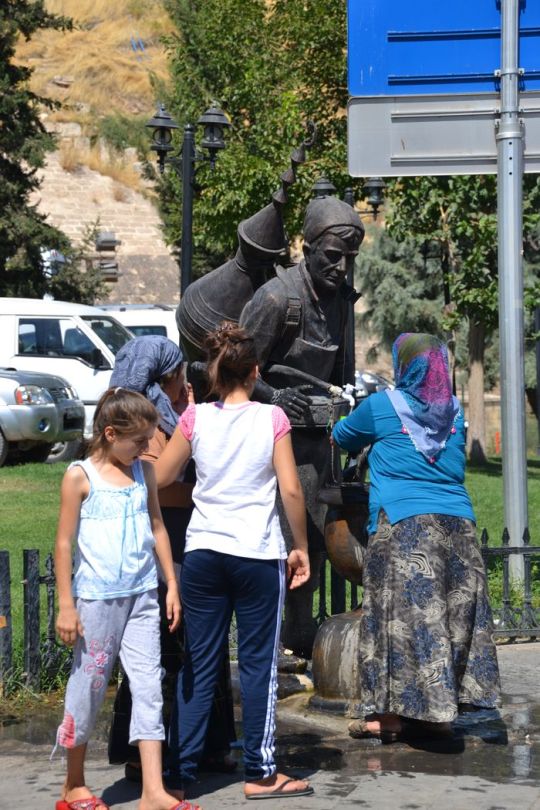
Material improvement of London
Amongst the larger problems still awaiting solution for the material improvement of London are: —
1. The completion of the embankment of the river on both sides between Battersea and Blackfriars, with due provision for continual easy access to the embankment, and with docks at suitable stations within it.
2. Improved access to the existing bridges, north and south.
3. New carriage bridges, at least at Lambeth and at Charing Cross.
4. A direct avenue connecting the three great northern railway termini with the Waterloo terminus and with Charing Cross.
5. Connections of Holborn with the Strand, the British Museum with Somerset House, Victoria Terminus with South Kensington and Lambeth, Ludgate Hill with Cheapside.
6. The reconstruction of Covent Garden and its ap proaches and connection of it with the Courts of Justice and with the north.
7. The reconstruction of the Main Drainage system, including the discharge of sewage to the sea.
8. The re-housing of the people displaced from decayed insanitary areas.
The minor improvements in every outlying parish and suburb are far too many and complex to be treated here.
These undertakings, together with a suitable building for the government of London to work in, may occupy the energy and resources of a whole generation. It is impossible to calculate the enormous loss in money, in comfort, in health, in labour, wasted by millions of people struggling to reach each other through crowded, narrow, and circuitous streets. Nor can we easily estimate the evils of pinching the government of a great capital by niggardly supply of the material appliances of its task.
The first thing is to make our city a healthful home for the people. The next is to furnish it abundantly with all the resources of civic life — one of the primary of which is adequate means of transit. The third is to invest it with dignity, impressiveness, and beauty private tours istanbul. The people who now have the destinies of their own city in their own hands will not long remain satisfied with squalor, ugliness, and discomfort. The civic patriotism of London has lain dormant for centuries, but in our generation it is reviving. And we may hope that ere the twentieth century is far advanced, it may create a new London worthy of its past history and its vast opportunities.
THE SACREDNESS OF ANCIENT BUILDINGS
A torso from the hand of Pheidias, a portrait by Titian, a Mass by Palestrina or Bach, a lyrical poem of Milton, an abbey church of the thirteenth century — are all works of art; matchless, priceless, sacred: such as man on this earth will never replace, nor ever again see. They are, each and all, that which are a great life, or a memorable deed: once spent, they can never be repeated in the same way again, and yet, once lived, or once achieved, they make the world to be for ever after a better place. And these inimitable works are not only amongst the heirlooms of mankind; but they are records of the life of our fathers, which concentrate in a single page, canvas, block of stone, hymn, or it may be, portal, as much history as would fill a library of dull written annals. From the point of view of beauty, of knowledge, of reverence, these works of art are, as the historian of Athens said, ‘an everlasting possession.’
Yet how strangely different is the care with which we treat the statue, the picture, the music, the poem, from the treatment we give the church — the church, one would think the most sacred of all. It is not so with us. We preserve the torso, or the portrait — we restore the church. We give it a new inside and a fresh outside. We deck it out in a brand-new suit to cover its nakedness. A committee of subscribers choose the style, the century, into which it shall be transposed; they wrangle in meetings, in rasping letters, and corrosive pamphlets, as to carrying on an early-pointed arcade in the lady-chapel, or as to introducing a gridiron mass of perpendicular tracery in the west window. The chapter, the subscribers, the amateur archaeologists, each have their pet style, sub-style, and epoch, their fancy architect, or infallible authority in stone, antiquities, and taste. Between them the church is gutted, scraped, refaced, translated into one of those brand-new, intensely mediaeval, machine-made, and engine-turned fabrics, which the pupils of the great man of the day turn out by the score. This is how we treat the church.
0 notes
Photo
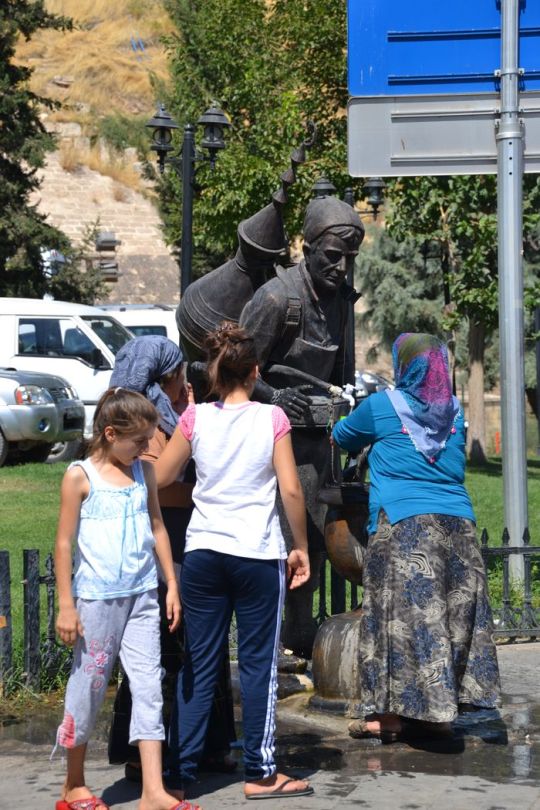
Material improvement of London
Amongst the larger problems still awaiting solution for the material improvement of London are: —
1. The completion of the embankment of the river on both sides between Battersea and Blackfriars, with due provision for continual easy access to the embankment, and with docks at suitable stations within it.
2. Improved access to the existing bridges, north and south.
3. New carriage bridges, at least at Lambeth and at Charing Cross.
4. A direct avenue connecting the three great northern railway termini with the Waterloo terminus and with Charing Cross.
5. Connections of Holborn with the Strand, the British Museum with Somerset House, Victoria Terminus with South Kensington and Lambeth, Ludgate Hill with Cheapside.
6. The reconstruction of Covent Garden and its ap proaches and connection of it with the Courts of Justice and with the north.
7. The reconstruction of the Main Drainage system, including the discharge of sewage to the sea.
8. The re-housing of the people displaced from decayed insanitary areas.
The minor improvements in every outlying parish and suburb are far too many and complex to be treated here.
These undertakings, together with a suitable building for the government of London to work in, may occupy the energy and resources of a whole generation. It is impossible to calculate the enormous loss in money, in comfort, in health, in labour, wasted by millions of people struggling to reach each other through crowded, narrow, and circuitous streets. Nor can we easily estimate the evils of pinching the government of a great capital by niggardly supply of the material appliances of its task.
The first thing is to make our city a healthful home for the people. The next is to furnish it abundantly with all the resources of civic life — one of the primary of which is adequate means of transit. The third is to invest it with dignity, impressiveness, and beauty private tours istanbul. The people who now have the destinies of their own city in their own hands will not long remain satisfied with squalor, ugliness, and discomfort. The civic patriotism of London has lain dormant for centuries, but in our generation it is reviving. And we may hope that ere the twentieth century is far advanced, it may create a new London worthy of its past history and its vast opportunities.
THE SACREDNESS OF ANCIENT BUILDINGS
A torso from the hand of Pheidias, a portrait by Titian, a Mass by Palestrina or Bach, a lyrical poem of Milton, an abbey church of the thirteenth century — are all works of art; matchless, priceless, sacred: such as man on this earth will never replace, nor ever again see. They are, each and all, that which are a great life, or a memorable deed: once spent, they can never be repeated in the same way again, and yet, once lived, or once achieved, they make the world to be for ever after a better place. And these inimitable works are not only amongst the heirlooms of mankind; but they are records of the life of our fathers, which concentrate in a single page, canvas, block of stone, hymn, or it may be, portal, as much history as would fill a library of dull written annals. From the point of view of beauty, of knowledge, of reverence, these works of art are, as the historian of Athens said, ‘an everlasting possession.’
Yet how strangely different is the care with which we treat the statue, the picture, the music, the poem, from the treatment we give the church — the church, one would think the most sacred of all. It is not so with us. We preserve the torso, or the portrait — we restore the church. We give it a new inside and a fresh outside. We deck it out in a brand-new suit to cover its nakedness. A committee of subscribers choose the style, the century, into which it shall be transposed; they wrangle in meetings, in rasping letters, and corrosive pamphlets, as to carrying on an early-pointed arcade in the lady-chapel, or as to introducing a gridiron mass of perpendicular tracery in the west window. The chapter, the subscribers, the amateur archaeologists, each have their pet style, sub-style, and epoch, their fancy architect, or infallible authority in stone, antiquities, and taste. Between them the church is gutted, scraped, refaced, translated into one of those brand-new, intensely mediaeval, machine-made, and engine-turned fabrics, which the pupils of the great man of the day turn out by the score. This is how we treat the church.
0 notes
Text
Wisteria Lodge
Our third story from His Last Bow - we've already done "The Dying Detective" and "The Cardboard Box".
This was published in two parts in The Strand.
Take a note of the Watsonian date here because this will be important later.
A reply-paid telegram was one where the sender also paid for the cost of any reply, up to a certain word limit (48 words for inland telegrams in the 1896 Post Office Guide).
You could send a telegram at most bigger post offices, or you could complete a pre-paid form and put it in a post box.
"Toilet" had a definition of the style of one's appearance.
Eccles is from Lee, which we've visited already in "The Man with The Twisted Lip" and which I discuss in my post for that.
Esher is today a town of around 7,000 people but part of a larger built-up area, thirteen miles from Charing Cross. While sitting outside the Greater London boundary in Surrey, the urban sprawl of London does not match the administrative boundaries and Esher is on the outer edge of this. You can in fact hit some serious countryside while staying within the city limits.
It also sat outside the Metropolitan Police District.
The town was historically a stagecoach stop on the London to Portsmouth road, which later become the A3 before that was diverted via a bypass around the town. It is home to the Sandown Park racecourse and George Harrison lived there for a while.
The railway station, then called Esher and Claremont (the latter being a Lancelot "Capability" Brown-designed mansion, then owned by a widowed daughter-in-law of Queen Victoria, her youngest son Prince Leopold having died due to haemophilia after a fall in 1884) is on the mainline from Waterloo to Weymouth - Aldershot being a bit further along on a branch line. It takes around half an hour to get there by modern electric train; only suburban services stop there, with express trains going straight through the disused centre platforms.
Spain, as a major power (even if most of its empire had already gone) and a monarchy, warranted an Embassy. San Pedro only would have had a legation.
There's quite a bit of racism in this one!
Some pictures of dog-grates can be found here.
Doors on many trains could be opened from the inside at the time, including on the move with the associated risks involved.
War crimes trials were not really a thing at this time.
Yet another case of the villains dying off-page!
The broad plot of this would not be out of place in a modern crime drama.
21 notes
·
View notes
Photo
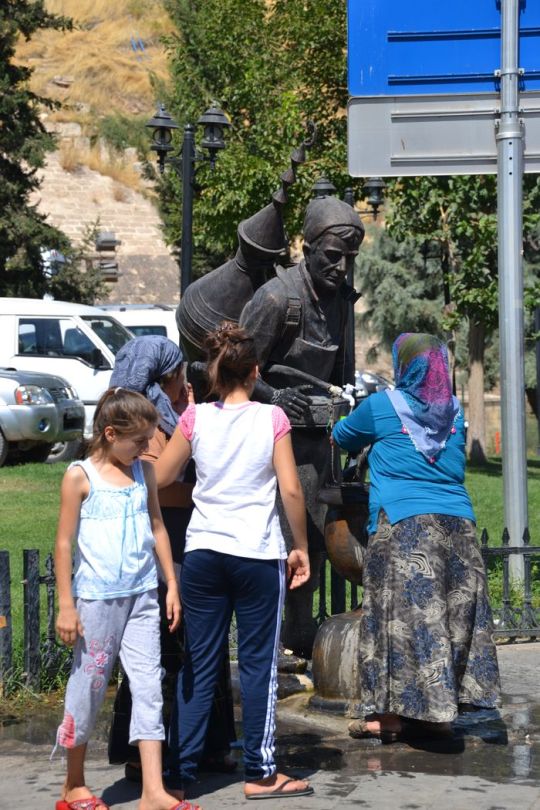
Material improvement of London
Amongst the larger problems still awaiting solution for the material improvement of London are: —
1. The completion of the embankment of the river on both sides between Battersea and Blackfriars, with due provision for continual easy access to the embankment, and with docks at suitable stations within it.
2. Improved access to the existing bridges, north and south.
3. New carriage bridges, at least at Lambeth and at Charing Cross.
4. A direct avenue connecting the three great northern railway termini with the Waterloo terminus and with Charing Cross.
5. Connections of Holborn with the Strand, the British Museum with Somerset House, Victoria Terminus with South Kensington and Lambeth, Ludgate Hill with Cheapside.
6. The reconstruction of Covent Garden and its ap proaches and connection of it with the Courts of Justice and with the north.
7. The reconstruction of the Main Drainage system, including the discharge of sewage to the sea.
8. The re-housing of the people displaced from decayed insanitary areas.
The minor improvements in every outlying parish and suburb are far too many and complex to be treated here.
These undertakings, together with a suitable building for the government of London to work in, may occupy the energy and resources of a whole generation. It is impossible to calculate the enormous loss in money, in comfort, in health, in labour, wasted by millions of people struggling to reach each other through crowded, narrow, and circuitous streets. Nor can we easily estimate the evils of pinching the government of a great capital by niggardly supply of the material appliances of its task.
The first thing is to make our city a healthful home for the people. The next is to furnish it abundantly with all the resources of civic life — one of the primary of which is adequate means of transit. The third is to invest it with dignity, impressiveness, and beauty private tours istanbul. The people who now have the destinies of their own city in their own hands will not long remain satisfied with squalor, ugliness, and discomfort. The civic patriotism of London has lain dormant for centuries, but in our generation it is reviving. And we may hope that ere the twentieth century is far advanced, it may create a new London worthy of its past history and its vast opportunities.
THE SACREDNESS OF ANCIENT BUILDINGS
A torso from the hand of Pheidias, a portrait by Titian, a Mass by Palestrina or Bach, a lyrical poem of Milton, an abbey church of the thirteenth century — are all works of art; matchless, priceless, sacred: such as man on this earth will never replace, nor ever again see. They are, each and all, that which are a great life, or a memorable deed: once spent, they can never be repeated in the same way again, and yet, once lived, or once achieved, they make the world to be for ever after a better place. And these inimitable works are not only amongst the heirlooms of mankind; but they are records of the life of our fathers, which concentrate in a single page, canvas, block of stone, hymn, or it may be, portal, as much history as would fill a library of dull written annals. From the point of view of beauty, of knowledge, of reverence, these works of art are, as the historian of Athens said, ‘an everlasting possession.’
Yet how strangely different is the care with which we treat the statue, the picture, the music, the poem, from the treatment we give the church — the church, one would think the most sacred of all. It is not so with us. We preserve the torso, or the portrait — we restore the church. We give it a new inside and a fresh outside. We deck it out in a brand-new suit to cover its nakedness. A committee of subscribers choose the style, the century, into which it shall be transposed; they wrangle in meetings, in rasping letters, and corrosive pamphlets, as to carrying on an early-pointed arcade in the lady-chapel, or as to introducing a gridiron mass of perpendicular tracery in the west window. The chapter, the subscribers, the amateur archaeologists, each have their pet style, sub-style, and epoch, their fancy architect, or infallible authority in stone, antiquities, and taste. Between them the church is gutted, scraped, refaced, translated into one of those brand-new, intensely mediaeval, machine-made, and engine-turned fabrics, which the pupils of the great man of the day turn out by the score. This is how we treat the church.
0 notes
Photo
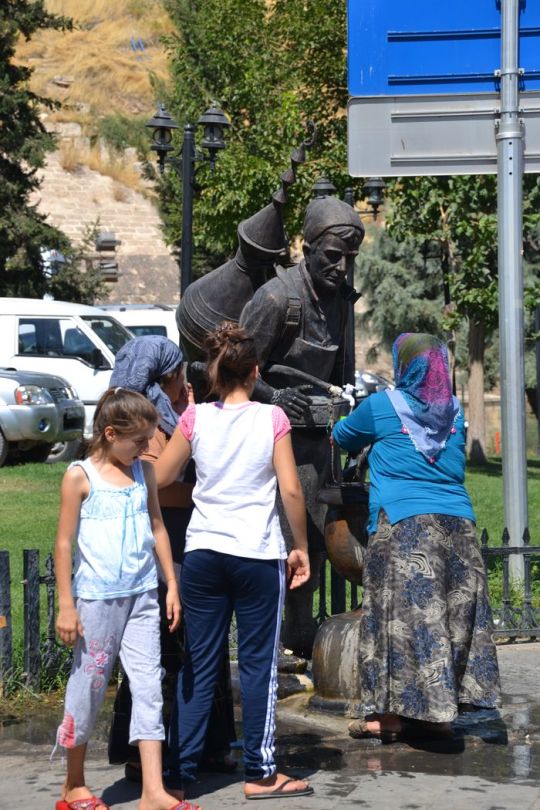
Material improvement of London
Amongst the larger problems still awaiting solution for the material improvement of London are: —
1. The completion of the embankment of the river on both sides between Battersea and Blackfriars, with due provision for continual easy access to the embankment, and with docks at suitable stations within it.
2. Improved access to the existing bridges, north and south.
3. New carriage bridges, at least at Lambeth and at Charing Cross.
4. A direct avenue connecting the three great northern railway termini with the Waterloo terminus and with Charing Cross.
5. Connections of Holborn with the Strand, the British Museum with Somerset House, Victoria Terminus with South Kensington and Lambeth, Ludgate Hill with Cheapside.
6. The reconstruction of Covent Garden and its ap proaches and connection of it with the Courts of Justice and with the north.
7. The reconstruction of the Main Drainage system, including the discharge of sewage to the sea.
8. The re-housing of the people displaced from decayed insanitary areas.
The minor improvements in every outlying parish and suburb are far too many and complex to be treated here.
These undertakings, together with a suitable building for the government of London to work in, may occupy the energy and resources of a whole generation. It is impossible to calculate the enormous loss in money, in comfort, in health, in labour, wasted by millions of people struggling to reach each other through crowded, narrow, and circuitous streets. Nor can we easily estimate the evils of pinching the government of a great capital by niggardly supply of the material appliances of its task.
The first thing is to make our city a healthful home for the people. The next is to furnish it abundantly with all the resources of civic life — one of the primary of which is adequate means of transit. The third is to invest it with dignity, impressiveness, and beauty private tours istanbul. The people who now have the destinies of their own city in their own hands will not long remain satisfied with squalor, ugliness, and discomfort. The civic patriotism of London has lain dormant for centuries, but in our generation it is reviving. And we may hope that ere the twentieth century is far advanced, it may create a new London worthy of its past history and its vast opportunities.
THE SACREDNESS OF ANCIENT BUILDINGS
A torso from the hand of Pheidias, a portrait by Titian, a Mass by Palestrina or Bach, a lyrical poem of Milton, an abbey church of the thirteenth century — are all works of art; matchless, priceless, sacred: such as man on this earth will never replace, nor ever again see. They are, each and all, that which are a great life, or a memorable deed: once spent, they can never be repeated in the same way again, and yet, once lived, or once achieved, they make the world to be for ever after a better place. And these inimitable works are not only amongst the heirlooms of mankind; but they are records of the life of our fathers, which concentrate in a single page, canvas, block of stone, hymn, or it may be, portal, as much history as would fill a library of dull written annals. From the point of view of beauty, of knowledge, of reverence, these works of art are, as the historian of Athens said, ‘an everlasting possession.’
Yet how strangely different is the care with which we treat the statue, the picture, the music, the poem, from the treatment we give the church — the church, one would think the most sacred of all. It is not so with us. We preserve the torso, or the portrait — we restore the church. We give it a new inside and a fresh outside. We deck it out in a brand-new suit to cover its nakedness. A committee of subscribers choose the style, the century, into which it shall be transposed; they wrangle in meetings, in rasping letters, and corrosive pamphlets, as to carrying on an early-pointed arcade in the lady-chapel, or as to introducing a gridiron mass of perpendicular tracery in the west window. The chapter, the subscribers, the amateur archaeologists, each have their pet style, sub-style, and epoch, their fancy architect, or infallible authority in stone, antiquities, and taste. Between them the church is gutted, scraped, refaced, translated into one of those brand-new, intensely mediaeval, machine-made, and engine-turned fabrics, which the pupils of the great man of the day turn out by the score. This is how we treat the church.
0 notes
Photo
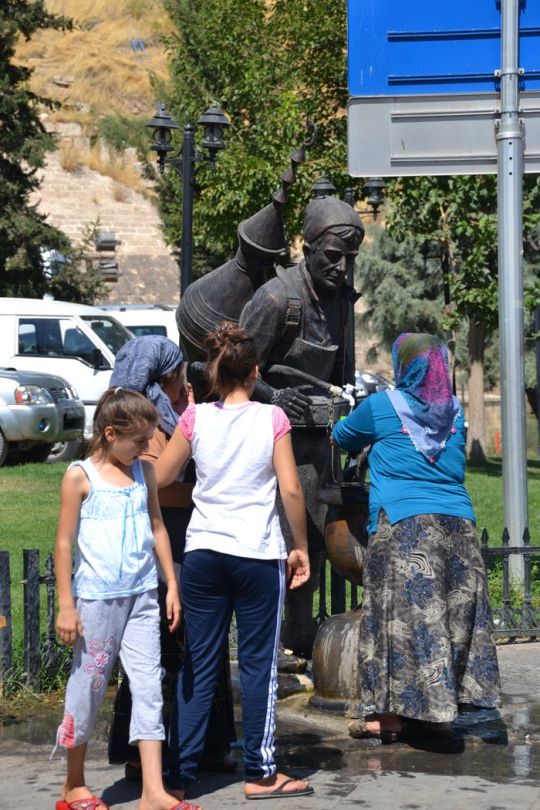
Material improvement of London
Amongst the larger problems still awaiting solution for the material improvement of London are: —
1. The completion of the embankment of the river on both sides between Battersea and Blackfriars, with due provision for continual easy access to the embankment, and with docks at suitable stations within it.
2. Improved access to the existing bridges, north and south.
3. New carriage bridges, at least at Lambeth and at Charing Cross.
4. A direct avenue connecting the three great northern railway termini with the Waterloo terminus and with Charing Cross.
5. Connections of Holborn with the Strand, the British Museum with Somerset House, Victoria Terminus with South Kensington and Lambeth, Ludgate Hill with Cheapside.
6. The reconstruction of Covent Garden and its ap proaches and connection of it with the Courts of Justice and with the north.
7. The reconstruction of the Main Drainage system, including the discharge of sewage to the sea.
8. The re-housing of the people displaced from decayed insanitary areas.
The minor improvements in every outlying parish and suburb are far too many and complex to be treated here.
These undertakings, together with a suitable building for the government of London to work in, may occupy the energy and resources of a whole generation. It is impossible to calculate the enormous loss in money, in comfort, in health, in labour, wasted by millions of people struggling to reach each other through crowded, narrow, and circuitous streets. Nor can we easily estimate the evils of pinching the government of a great capital by niggardly supply of the material appliances of its task.
The first thing is to make our city a healthful home for the people. The next is to furnish it abundantly with all the resources of civic life — one of the primary of which is adequate means of transit. The third is to invest it with dignity, impressiveness, and beauty private tours istanbul. The people who now have the destinies of their own city in their own hands will not long remain satisfied with squalor, ugliness, and discomfort. The civic patriotism of London has lain dormant for centuries, but in our generation it is reviving. And we may hope that ere the twentieth century is far advanced, it may create a new London worthy of its past history and its vast opportunities.
THE SACREDNESS OF ANCIENT BUILDINGS
A torso from the hand of Pheidias, a portrait by Titian, a Mass by Palestrina or Bach, a lyrical poem of Milton, an abbey church of the thirteenth century — are all works of art; matchless, priceless, sacred: such as man on this earth will never replace, nor ever again see. They are, each and all, that which are a great life, or a memorable deed: once spent, they can never be repeated in the same way again, and yet, once lived, or once achieved, they make the world to be for ever after a better place. And these inimitable works are not only amongst the heirlooms of mankind; but they are records of the life of our fathers, which concentrate in a single page, canvas, block of stone, hymn, or it may be, portal, as much history as would fill a library of dull written annals. From the point of view of beauty, of knowledge, of reverence, these works of art are, as the historian of Athens said, ‘an everlasting possession.’
Yet how strangely different is the care with which we treat the statue, the picture, the music, the poem, from the treatment we give the church — the church, one would think the most sacred of all. It is not so with us. We preserve the torso, or the portrait — we restore the church. We give it a new inside and a fresh outside. We deck it out in a brand-new suit to cover its nakedness. A committee of subscribers choose the style, the century, into which it shall be transposed; they wrangle in meetings, in rasping letters, and corrosive pamphlets, as to carrying on an early-pointed arcade in the lady-chapel, or as to introducing a gridiron mass of perpendicular tracery in the west window. The chapter, the subscribers, the amateur archaeologists, each have their pet style, sub-style, and epoch, their fancy architect, or infallible authority in stone, antiquities, and taste. Between them the church is gutted, scraped, refaced, translated into one of those brand-new, intensely mediaeval, machine-made, and engine-turned fabrics, which the pupils of the great man of the day turn out by the score. This is how we treat the church.
0 notes